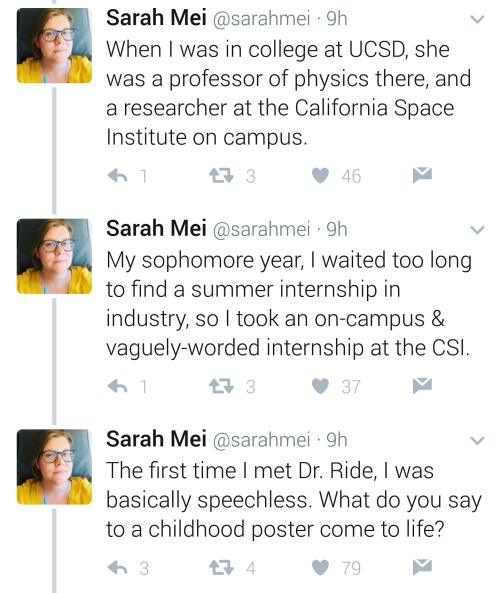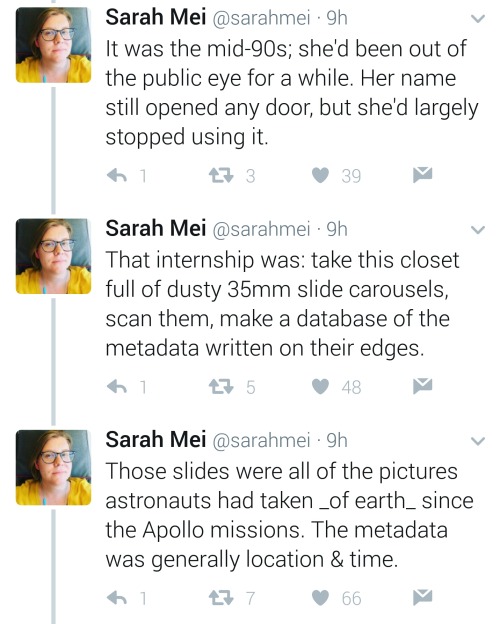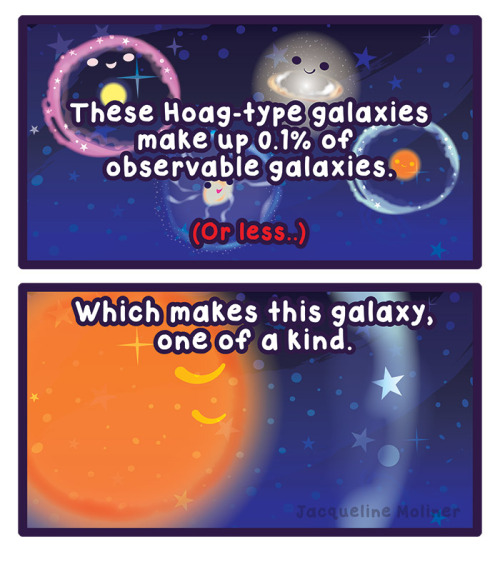Glossary
Happy long weekend to folks in the US who are lucky enough to HAVE a long weekend! I finally fulfilled my promise to bring you an episode on comets—I didn’t last month but I had a good reason, and that reason was black holes. Now you can learn about comets! I’ve likewise talked about comets before, but now I go in-depth on what they are, some great comets throughout human history, and some of the missions we’ve sent out to collect info on comets.
Below the cut are the glossary, transcript, a timeline of all the people I mention, sources, and music credits. Send me any topic suggestions via Tumblr message (you don’t need an account to do this, just submit as anonymous). You can also tweet at me on Twitter at @HDandtheVoid, or you can ask me to my face if you know me in real life. Subscribe on iTunes to get the new episodes of my semi-monthly podcast, and please please please rate and review it. Go ahead and tell friends if you think they’d like to hear it, too!
(The next episode is... not decided, or even thought about much. It’ll go up at the end of June if I come up with a topic, though!)
Glossary
coma - the cloud of dust and gas particles that is burned off of a comet and trails behind it, helping to form the comet’s tail.
comet - a small, icy body that orbits the Sun. When its orbit takes it close to the Sun, the comet warms up and releases gases and debris that produce a visible atmosphere, sometimes called the comet’s tail. (ep. 8, 9, 33)
hyperbolic comets - comets which will only ever enter our solar system once.
long period comets - comets come near our Sun for brief times every few thousand years, following egg-shaped elliptical orbits that often send them beyond Pluto before they return to the Sun.
short-period comets - comets that orbit the Sun closely and show up at regular intervals.
sungrazing comets - comets which come within about 850,000 miles from the Sun at their perihelion, though many of these kinds of comets come even closer, to within a few thousand miles at perihelion.
perihelion - a comet’s closest approach to the Sun in its orbit.
Transcript
Timeline
Ephorus of Cyme (c. 400-330 BCE), Greek
Taqi ad-Din (1526–1585), Turkish
Tycho Brahe (1546-1601), Danish
Gottfried Kirch (1639-1710), German
Isaac Newton (1643-1727), English
Eusebio Kino (1645-1711), Spanish
Edmund Halley (1656-1742), English
Battista Donati (1826-1873), Italian
Jérôme Eugène Coggia (1849-1919), French
Heinrich Kreutz (1854-1907), German
Frank Skjellerup (1875-1952), Australian
Edmundo Maristany (1895-1983), Argentinian
Sylvain Arend (1902-1992), Belgian
Georges Roland (1922-1991), Belgian
Eugene Shoemaker (1928-1997), American
Carolyn Shoemaker (1929- ), American
Tsutomu Seki (1930- ), Japanese
Richard Martin West (1941- ), Danish
Kaoru Ikeya (1943- ), Japanese
David H. Levy (1948- ), Canadian
Thomas Bopp (1949-2018), American
Yuji Hyakutake (1950- ), Japanese
Robert McNaught (1956- ), Scottish-Australian
Alan Hale (1958- ), American
Terry Lovejoy (1966- ), Australian
Sources
Comets via Cool Cosmos (August 2013)
Comet Introduction via Views of the Solar System
On Hyperbolic Comets by David W. Hughes (1991)
What is a Sungrazing Comet? via NASA (July 2013)
Missions to Comets via NASA
Galileo via NASA
Shoemaker-Levy 9 via NASA
Rosetta Images via ESA (video)
Rosetta spacecraft image archive complete via EarthSky (June 2018)
Intro Music: ‘Better Times Will Come’ by No Luck Club off their album Prosperity
Filler Music: ‘Stories We Build/Stories We Tell’ by José González off his album Vestiges & Claws
Outro Music: ‘Fields of Russia’ by Mutefish off their album On Draught
More Posts from Fillthevoid-with-space and Others
Hubble Spots Two Interacting Galaxies Defying Cosmic Convention
NASA - Hubble Space Telescope patch. March 24, 2017
Some galaxies are harder to classify than others. Here, Hubble’s trusty Wide Field Camera 3 (WFC3) has captured a striking view of two interacting galaxies located some 60 million light-years away in the constellation of Leo (The Lion). The more diffuse and patchy blue glow covering the right side of the frame is known as NGC 3447 — sometimes NGC 3447B for clarity, as the name NGC 3447 can apply to the overall duo. The smaller clump to the upper left is known as NGC 3447A. Overall, we know NGC 3447 comprises a couple of interacting galaxies, but we’re unsure what each looked like before they began to tear one another apart. The two sit so close that they are strongly influenced and distorted by the gravitational forces between them, causing the galaxies to twist themselves into the unusual and unique shapes seen here. NGC 3447A appears to display the remnants of a central bar structure and some disrupted spiral arms, both properties characteristic of certain spiral galaxies. Some identify NGC 3447B as a former spiral galaxy, while others categorize it as being an irregular galaxy.
Hubble Space Telescope
For Hubble’s image of the Whirlpool Galaxy, visit: http://hubblesite.org/ http://www.nasa.gov/hubble http://www.spacetelescope.org/ Image, Animation, Credits: ESA/Hubble & NASA/Text Credits: European Space Agency/NASA/Karl Hille. Best regards, Orbiter.ch Full article

Stars are too distant to really peer at and they have all that radiation and heat and blinding light and such so it’s doubtful that we will ever be able to prod the Sun, but astronomers can certainly classify what stars we’ve been able to observe! This is the first part of a two-part series on star classification systems. This podcast focuses on variable stars, how they were discovered, the awesome women who started developing the basis of a major star classification system, and what variable stars did for our understanding of the universe.
There is a lot of technical talk and I did my best to make it comprehensible but you can absolutely hit me up with questions if you have them! I’m also on Twitter at @HDandtheVoid if you’d rather ask me there. And go ahead and check out the podcast on iTunes, rate it or review it if you’d like, and subscribe! I’ll always post all the extras here on tumblr but iTunes might be more convenient for downloading and podcast apps and all that good stuff.
Below the cut is some elaboration on the episode itself, including my sources, music credits, a BIG glossary, a quote on women and emotional labor that really hits home for me, and a transcript. I mention a couple of books and quote a couple people in this episode so if you want to see that written down, those sources are there as well. Let me know what you think of this episode, let me know what you think I should research next*, tell me a fun space fact… anything’s helpful!
*(The June 19th podcast is already set, it’s going to be part 2 on star classifications, but in July I could start talking about things like spectroscopy, planets, dark matter, or I have a book in at the library on longitude.)
Glossary:
arcsecond - an infinitesimal measurement of a degree; in 1 degree there are 3,600 arcseconds.
cosmic distance measurements: light-years - a way to imagine distance scales on an astronomical level; the distance light can travel in one year, or about 6 trillion miles. parsecs - a measurement of distance on an astronomical scale; the distance to a star that shifts by one arcsecond from one side of Earth’s orbit to the other. It’s more common than using light-years when discussing deep space astronomy. One parsec is about 19 trillion miles (30 trillion kilometers), a bit over 3 light-years.
magnitude - the measurement of a star’s brightness as seen from earth. The brighter it is, the lower its magnitude value; the Sun has an apparent magnitude of -27.
Malmquist Bias - the stars that are visible in a cluster are the brightest ones. Astronomers rely on them to compute average luminosity, but the fact that they’re the brightest ones inevitably skews the results.
parallax - the apparent shift of an object when viewed through two different lines of sight.
radial velocity - the speed at which a star is moving away from or towards Earth.
standard candle - a kind of celestial object that has a known luminosity due to some characteristic that the entire class of objects possesses.
stellar photometry - measuring and recording the magnitude of stars.
triangulation - a technique to measure the distance of an object by observing it from two different locations, knowing the distance between both observation locations and measuring the angle at which the distant object moves (its parallax angle).
variable stars: variable stars - stars that change brightness. Reasons for the brightness changes vary, and certain types of variable stars can be used to determine relative distance. They are either intrinsic (when a change in brightness is caused by a star’s own physical changes, like pulsation or eruption) or extrinsic (when the variance has an external cause, such as an eclipse of one star by another or stellar rotation). Cepheid variables - variable stars with a period between 1 and 70 days, with light variations from 0.1 to 2 magnitudes. They’re massive, with a high luminosity and are usually classified between F and G or K. They obey the period-luminosity relationship and played a major part in calculating distances to far-away galaxies as well as helping to determine the age of the Universe. eclipsing binaries - binary systems of stars where the components regularly eclipse one another, causing an apparent decrease in the brightness of the system. irregular variables - variable stars, typically red giants, without a measurable period to their luminosity. Long Period Variables - LPVs have periods ranging from 30 to 1,000 days. They’re red giants or supergiants, typically classified M, R, C, or N. There are subclasses, too: Mira, which have light variations of more than 2.5 magnitudes and are the future evolution of our own star, the Sun; and semiregular, which have some regular periods and some irregular light variation and have light variations less than 2.5 magnitudes. RR Lyrae - variable stars with a period of 0.05 to 1.2 days and a light variation between 0.3 and 2 magnitudes. They’re older and smaller than Cepheids, and are white giant stars typically classified as A. RV Tauri - variable stars that have periods between 30 and 150 days, light variation up to 3 magnitudes, and possible cycle variations that can be hundreds or thousands of days long. They’re yellow supergiants classified between G and K.
cataclysmic variables: dwarf nova - a close binary system of a red dwarf, a white dwarf, and an accretion disk around the white dwarf. They brighten by 2 to 6 magnitudes depending on the stability of the disk, which loses material to the white dwarf. nova - a close binary system of a white dwarf and a secondary star that’s a little cooler than the Sun. The system brightens 7 to 16 magnitudes in 1 to 100 days, and then the star fades slowly to the initial brightness over a period of several years or decades. At maximum brightness, it’s similar to an A or F giant star. Recurrent novae are similar to this category of variable but have several outbursts during their recorded history. R Coronae Borealis - an eruptive variable, a supergiant star that is hydrogen-poor and carbon-rich and spends most of its time at maximum light, fading as much as 9 magnitudes at irregular intervals. Most often classified between F and K or R. supernova - a massive star that explodes with a magnitude increase of 20 or more. Supernovae have led us to realize that the expansion of the Universe is accelerating. symbiotic stars - close binary systems of a red giant and a hot blue star. They have nova-like outbursts up to 3 magnitudes.
Script/Transcript
Sources:
What stars are made of via NASA
Stars, Cepheid Variable by T. Lloyd Evans via the California Institute of Technology aka CalTech
Variable stars via the Australia Telescope National Facility
American Association of Variable Star Observers website. I used a couple of pages from this one but the whole organization is kinda on the nose.
Stellar magnitude via EarthSky
A star magnitude scale via Harvard
Harvard Observatory’s Astronomical Photographic Plate Collection, which has a history of the collection and the women computers.
Definitions and differences for parsecs and light-years, and a description of parallax and triangulation via EarthSky
Standard candle breakdowns via some magical wonderful person with the best accessible online science book project I have ever encountered. Mad props to whoever is doing this, it’s a noble cause.
Info on Walter Baade via the Online Archives of California
A very math-y breakdown of the Malmquist Bias in the article “Observational Selection Bias Affecting the Determination of the Extragalactic Distance Scale” by P. Teerikorpi, published 1997
Johnson, George. Miss Leavitt’s Stars. Atlas Books: NY, 2005.
Henrietta Swan Leavitt quote: “It is worthy of notice [that] the brighter variables have the longer periods” (38).
“If a theory or observation seemed to suggest that we, the observers, happen to occupy an exalted place in the heavens, then it was probably wrong” (110)
Edwin Hubble quote: “With increasing distance, our knowledge fades, and fades rapidly. Eventually, we reach the dim boundary—the utmost limits of our telescopes. There, we measure shadows, and search among ghostly errors of measurements for landmarks that are scarcely more substantial” (130)
Pickover, Clifford A. “Leavitt’s Luminosity Law.” Archimedes to Hawking: Laws of Science and the Great Minds Behind Them. Oxford UP: NY, 2008. 475.
Soba, Dava. The Glass Universe: How the Ladies of the Harvard Observatory Took the Measure of the Stars. Viking: New York, 2016.
From Claire Messud’s The Woman Upstairs (I haven’t read the book, I just collect quotes, so this isn’t me endorsing the book; I know nothing about it except this paragraph): “I’m a good girl, I’m a nice girl, I’m a straight-A, strait-laced, good daughter, good career girl, and I never stole anybody’s boyfriend and I never ran out on a girlfriend, and I put up with my parents’ shit and my brother’s shit, and I’m not a girl anyhow, I’m over forty fucking years old, and I’m good at my job and I’m great with kids and I held my mother’s hand when she died, after four years of holding her hand while she was dying and I speak to my father every day on the telephone–every day, mind you, and what kind of weather do you have on your side of the river, because here it’s pretty gray and a bit muggy too? It was supposed to say ‘Great Artist’ on my tombstone, but if I died right now it would say ‘such a good teacher/daughter/friend’ instead; and what I really want to shout, and want in big letters on that grave, too, is FUCK YOU ALL.”
Intro Music: ‘Better Times Will Come’ by No Luck Club off their album Prosperity
Filler Music: 'River Man’ by Nick Drake off his album Five Leaves Left.
Outro Music: ‘Fields of Russia’ by Mutefish off their album On Draught










Equal opportunity benefits can be far-reaching
https://twitter.com/sarahmei/status/818682610712866817

ASTROGENOUS
[adjective]
producing or creating stars.
Etymology: from Greek, from astron “star” + -genēs “born”.
[J. R. Slattum - Star Maker]
September 15
This one is technically not yet history, because at the time of posting, the little craft has about half an hour left to go. That said, let’s proceed.
In 2017, NASA’s Cassini space probe ended its twenty-year mission at Saturn. After a nearly-seven-year-long journey there, it orbited the ringed planet for 13 years and just over two months, gathering copious amounts of information about the planet, said rings, and many of its moons. It landed an ESA probe called Huygens on Titan, the first-ever soft landing in the outer Solar System. It discovered lakes, seas, and rivers of methane on Titan, geysers of water erupting from Enceladus (and passed within 50 miles of that moon’s surface), and found gigantic, raging hurricanes at both of Saturn’s poles.
And the images it returned are beautiful enough to make you weep.
On this day in 2017, with the fuel for Cassini’s directional thrusters running low, the probe was de-orbited into the Saturnian atmosphere to prevent any possibility of any contamination of possible biotic environments on Titan or Enceladus. The remaining thruster fuel was used to keep the radio dish pointed towards Earth so the probe could transmit information about the upper atmosphere of Saturn while it was burning up due to atmospheric friction.
This is us at our best. We spent no small amount of money on a nuclear-powered robot, launched it into space, sent it a billion miles away, and worked with it for two decades just to learn about another planet. And when the repeatedly-extended missions were through, we made the little craft sacrifice itself like a samurai, performing its duty as long as it could while it became a shooting star in the Saturnian sky.

Rhea occulting Saturn

Water geysers on Enceladus

Strange Iapetus

Look at this gorgeousness

A gigantic motherfucking storm in Saturn’s northern hemisphere

Tethys

This image is from the surface of a moon of a planet at least 746 million miles away. Sweet lord

Mimas

Vertical structures in the rings. Holy shit

Titan and Dione occulting Saturn, rings visible

Little Daphnis making gravitational ripples in the rings

That’s here. That’s home. That’s all of us that ever lived.

Saturn, backlit

A polar vortex on the gas giant

Icy Enceladus
(All images from NASA/JPL)
Star Discovered in Closest Known Orbit Around Likely Black Hole
NASA - Chandra X-ray Observatory patch. Astronomers have found evidence for a star that whips around a black hole about twice an hour. This may be the tightest orbital dance ever witnessed for a likely black hole and a companion star.
Image above: Artist’s illustration of a star found in the closest orbit known around a black hole in the globular cluster named 47 Tucanae. Image Credits: X-ray: NASA/CXC/University of Alberta/A.Bahramian et al.; Illustration: NASA/CXC/M.Weiss. This discovery was made using NASA’s Chandra X-ray Observatory as well as NASA’s NuSTAR and CSIRO’s Australia Telescope Compact Array (ATCA). The close-in stellar couple – known as a binary – is located in the globular cluster 47 Tucanae, a dense cluster of stars in our galaxy about 14,800 light years from Earth. While astronomers have observed this binary for many years, it wasn’t until 2015 that radio observations with the ATCA revealed the pair likely contains a black hole pulling material from a companion star called a white dwarf, a low-mass star that has exhausted most or all of its nuclear fuel. New Chandra data of this system, known as X9, show that it changes in X-ray brightness in the same manner every 28 minutes, which is likely the length of time it takes the companion star to make one complete orbit around the black hole. Chandra data also shows evidence for large amounts of oxygen in the system, a characteristic feature of white dwarfs. A strong case can, therefore, be made that the companion star is a white dwarf, which would then be orbiting the black hole at only about 2.5 times the separation between the Earth and the Moon. “This white dwarf is so close to the black hole that material is being pulled away from the star and dumped onto a disk of matter around the black hole before falling in,” said first author Arash Bahramian of the University of Alberta in Edmonton, Canada, and Michigan State University in East Lansing. “Luckily for this star, we don’t think it will follow this path into oblivion, but instead will stay in orbit.” Although the white dwarf does not appear to be in danger of falling in or being torn apart by the black hole, its fate is uncertain.
Chandra X-ray Observatory. Image Credits: NASA/CXC
“Eventually so much matter may be pulled away from the white dwarf that it ends up only having the mass of a planet,” said co-author Craig Heinke, also of the University of Alberta. “If it keeps losing mass, the white dwarf may completely evaporate.” How did the black hole get such a close companion? One possibility is that the black hole smashed into a red giant star, and then gas from the outer regions of the star was ejected from the binary. The remaining core of the red giant would form into a white dwarf, which becomes a binary companion to the black hole. The orbit of the binary would then have shrunk as gravitational waves were emitted, until the black hole started pulling material from the white dwarf. The gravitational waves currently being produced by the binary have a frequency that is too low to be detected with Laser Interferometer Gravitational-Wave Observatory, LIGO, that has recently detected gravitational waves from merging black holes. Sources like X9 could potentially be detected with future gravitational wave observatories in space. An alternative explanation for the observations is that the white dwarf is partnered with a neutron star, rather than a black hole. In this scenario, the neutron star spins faster as it pulls material from a companion star via a disk, a process that can lead to the neutron star spinning around its axis thousands of times every second. A few such objects, called transitional millisecond pulsars, have been observed near the end of this spinning up phase. The authors do not favor this possibility as transitional millisecond pulsars have properties not seen in X9, such as extreme variability at X-ray and radio wavelengths. However, they cannot disprove this explanation. “We’re going to watch this binary closely in the future, since we know little about how such an extreme system should behave”, said co-author Vlad Tudor of Curtin University and the International Centre for Radio Astronomy Research in Perth, Australia. “We’re also going to keep studying globular clusters in our galaxy to see if more evidence for very tight black hole binaries can be found.” A paper describing these results was recently accepted for publication in the Monthly Notices of the Royal Astronomical Society and is available online: https://arxiv.org/abs/1702.02167 NASA’s Marshall Space Flight Center in Huntsville, Alabama, manages the Chandra program for NASA’s Science Mission Directorate in Washington. The Smithsonian Astrophysical Observatory in Cambridge, Massachusetts, controls Chandra’s science and flight operations. Read More from NASA’s Chandra X-ray Observatory: http://chandra.harvard.edu/photo/2017/47tuc/ For more Chandra images, multimedia and related materials, visit: http://www.nasa.gov/chandra Images (mentioned), Text, Credits: NASA/Lee Mohon/Marshall Space Flight Center/Molly Porter/Chandra X-ray Center/Megan Watzke. Greetings, Orbiter.ch Full article
Cosmos is a Greek word for the order of the universe. It is, in a way, the opposite of Chaos. It implies the deep interconnectedness of all things. It conveys awe for the intricate and subtle way in which the universe is put together.
Carl Sagan, Cosmos (via wordsnquotes)
A podcast project to fill the space in my heart and my time that used to be filled with academic research. In 2018, that space gets filled with... MORE SPACE! Cheerfully researched, painstakingly edited, informal as hell, definitely worth everyone's time.
243 posts














